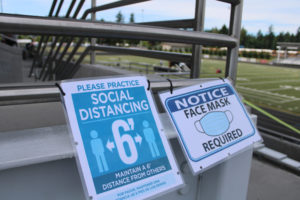It is becoming increasingly clear that the federal government’s monthslong push to “return to normal” and get past the COVID-19 pandemic is not working.
In March, when the Biden administration unveiled its National COVID-19 Preparedness Plan and a team of medical professionals — many of them former advisors to President Joe Biden — released their own “roadmap” for moving past the pandemic, we were just coming down from the highest COVID transmission, hospitalization and death rates we’d ever experienced thanks to the highly contagious omicron variant and the goal for “getting back to normal” was clear: “The United States’ pandemic phase — with restrictive public health measures — can end when average daily deaths due to COVID and other major respiratory illnesses decline below 0.5 per 1 million Americans, or 165 deaths a day at a national level. “At that point, the United States can transition into the next normal,” the authors of the “COVID Roadmap” stated in their 136-page report.



